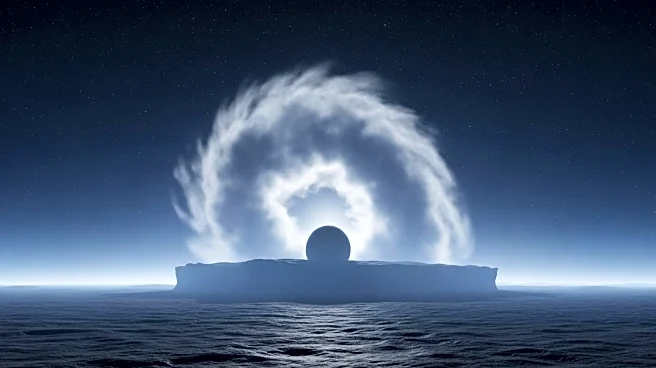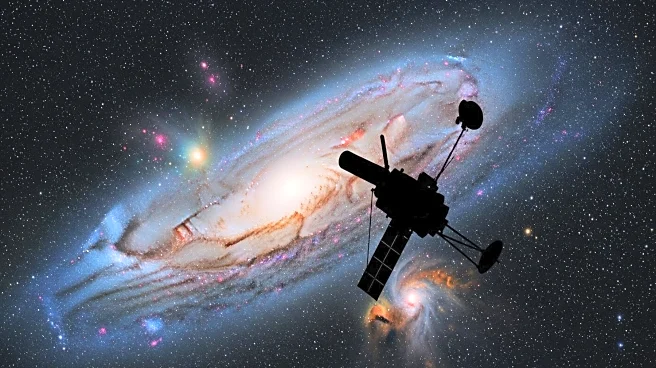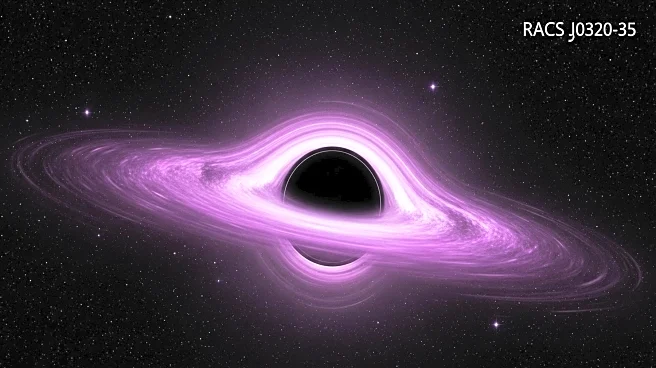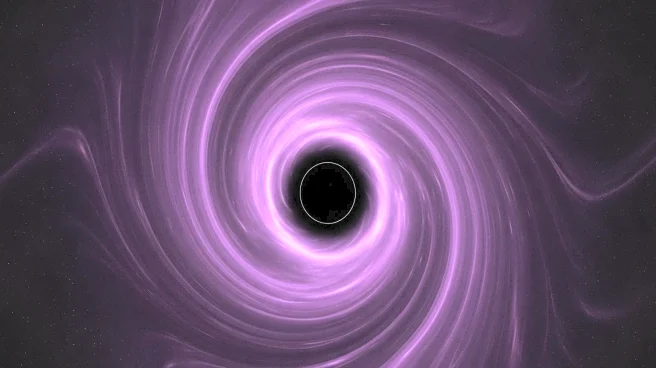What's Happening?
Scientists have discovered methane gas on the dwarf planet Makemake, suggesting that it is a dynamic icy world. The discovery was made by a team led by the Southwest Research Institute using NASA's James Webb Space Telescope. Makemake, one of the largest and brightest worlds beyond Neptune, is now the second trans-Neptunian object, after Pluto, found to have a confirmed presence of gas. The methane detection indicates that Makemake is not an inactive remnant of the outer solar system but a dynamic body where methane ice is evolving. The presence of methane in gas form could be due to a tenuous atmosphere or transient activity such as cryovolcanic plumes.
Why It's Important?
The detection of methane on Makemake is significant as it challenges previous assumptions about the dwarf planet's inactivity. This discovery could lead to a better understanding of the processes occurring on trans-Neptunian objects and their atmospheres. It also highlights the capabilities of the James Webb Space Telescope in studying distant celestial bodies. The findings may influence future research and exploration missions targeting similar objects in the solar system, potentially uncovering more about their composition and activity.
What's Next?
Future observations using the James Webb Space Telescope at higher spectral resolution are planned to determine whether the methane arises from a thin bound atmosphere or plume-like outgassing. These observations will help refine models of Makemake's atmospheric conditions and activity levels, providing deeper insights into its nature and behavior.










